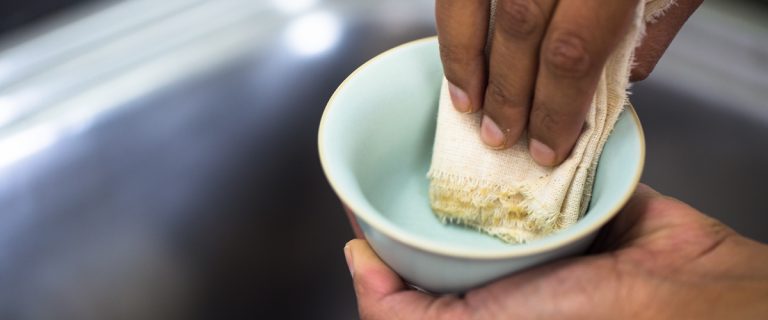From the evolved tea ceremonies practiced in Japan to the simpler high tea tradition of Europe, every country has its tea story and using the appropriate teaware is essential to getting the flavor and the presentation right. Kettles, pots, cups, infusers, filters and storage containers are just some of the things you are likely to use. Caring for these and maintaining them properly is the first step towards brewing that perfect cup.
Glass Teaware
Ideal for lovers of tea, glass teaware allows the drinker to watch the tea leaves, colours and the flavours unfurl. Tea can be brewed for just the right amount of time sans the timer. The downside can be that the glass may overheat and you may want to use a cloth to get past the issue.
Stains
Glass teapots may stain due to dark teas and are susceptible to watermarks too.
Cleaning and Caring
- Empty the utensil immediately after use, and rinse the spout.
- Wash with soap and rinse with warm water (to avoid any soap residue)
- Use baking soda to get rid of tea stains and a toothpaste scrub for a stronger stain
- Soak in medium hot water with lemon, to clean water stains
- To rid a lingering taste, soak the teaware in vinegar and wash normally
- Wipe the with a damp cloth and dry with a soft dish towel to avoid watermarks
- Never use hard brushes as it may scratch your glass teaware
- If a dishwasher is being used, put the glass teaware only on the top rack
- Do not use the utensil if chipped or cracked
Ceramic Teaware
Ceramic teaware is used for the steady and slow brewing of tea. Since ceramic retains heat very easily, it’s a great material to use to steep tea.
Stains:
Ceramic tends to retain some residue from tea leaves or powder, and tends to stain if it is made of a light colour.
Cleaning and Caring
- Flush the utensils with water, immediately after use
- Use a soft cloth to dry them minimally
- If glazed interiors, rinse with warm water to avoid any soap residues
- If unglazed, never use soap as the interior walls will absorb and retain soap. Instead just use warm water to clean.
- To remove residue, dampen salt on the residue, then scrub with a soft toothbrush
- Replace if the utensils are chipped, or the stains don’t come out after multiple scrubs.
Porcelain Teaware
Porcelain teaware is ideal for green and white teas as they don’t provide odors to the tea. Also, they stain minimally, and are therefore well suited for herbal infusion teas as well.
Stains
Porcelain teaware is easy to clean, yet has a propensity to retain tea residue at the bottom, or inside the tea spout.
Cleaning and Caring
- Scrub with mild detergent and then rinse them with warm water after regular use
- Mix vinegar and corn starch, let it sit for several minutes and scrub to remove stains (or lemon juice + baking soda / or just salt)
- Overnight soak works well to bring out those stubborn stains, can be detergent, salt, lemon juice and vinegar
- Avoid varying water temperatures while washing the utensil.
- Bleach and chemicals to avoided while cleaning porcelain
- Replace only if chipped or cracked
Metal Teaware
Metal teaware such as silver plate, silver, and stainless steel have been used in the brewing and steeping of tea. Metal is a great conductor of heat. Hence, the tea will stay warm for longer.
Stains
Since metal gets oxidised easily, it tends to stain or turn black with just a few uses. Silver teaware could get tarnished, and these need to be de-tarnished often. Metal could also overstep the tea, or lend its metallic taste to the taste of the tea.
Cleaning and Caring
- Immediately after use, rinse with warm water.
- Use a few drops of vinegar or lemon juice to clean metal teaware. Soak it in the solution for 2 hours, and then brush. Your teaware will be as good as new.
- If the stains are stubborn, mix 4 teaspoons of baking soda in warm water, and pour into the teaware. Then scrub the pot clean.
- Avoid washing metal in hot water, as it can easily flake.
- If it is taken care of, and the iron taste doesn’t lend itself to the tea, the teaware can be used for generations.

Comments are closed.